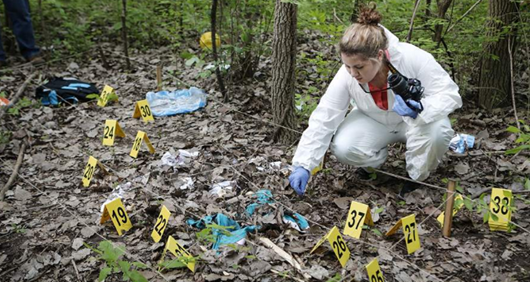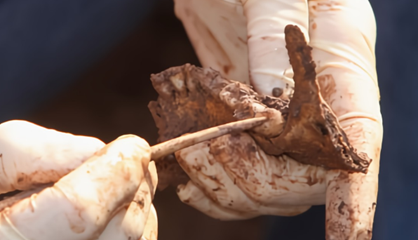Unit 5: Career
Paths in Forensic Science - Part 3
Forensic
Botany
Follow along with your text on pages 25-28.

When a person dies under mysterious
circumstances, a forensic botanist is called on to apply their knowledge of
genetics to collect and analyze plants found at crime scenes or in the body of
a crime victim. Plant evidence can range from twigs to large pieces of wood or
other parts that are visible to the naked eye. Forensic botanist also collects
and study microscopic samples of seeds, spores, and pollen. The analysis
provides law enforcement with information about the crime. For example, if a
unique plant is found on the victims' clothes, it can be determined if a person
was killed at the crime scene or elsewhere. They can also determine what time
of the year the crime was committed.
Forensic
Chemistry
The
Chemistry of Crime Solving | Discovery Education
A forensic chemist is a specialized chemist who
analyzes physical evidence and samples to help solve crimes. Their main goal is
to identify unknown materials to a known substance. Some examples of a
controlled substance are drugs and chemicals whose production a government
regulates the possession or use—often negatively affecting a person's health
and welfare.
Forensic
Dentistry

Figure 1 Bing
A dentist is someone who diagnoses and treats
problems with our teeth, gums, and related parts of our mouths. In forensics, a
forensics dentist will use their dental knowledge to identify human remains,
conduct bite mark analyses, and analyze dental injuries and neglect in abuse
cases. They also resolve dental malpractice or negligence issues. A forensics
dentist is also known as a forensic odontologist.
One of the primary jobs a forensic dentist does
is to identify human remains. When bodies have been severely damaged by fires,
natural disasters, explosions, and other events that speed up decomposition, a
single tooth or jaw fragment can be used to identify a person. When a death
occurs, forensic dentist attends autopsies and gather information. They snap
pictures, make dental impressions, and review copies of x-rays. Additionally,
they visit crime scenes where the accident or a natural disaster occurred to
gather more evidence.
Another important part of the job is that
forensic dentists conduct mark analyses to identify predators who commit rape,
domestic violence, assault, elder abuse, and other crimes.
To learn
more:
American Society of Forensic Odontology
Forensic
Document Examination
Another area of forensic science involves the
authentication of documents. Forensic document examinations verify that a
document is real or true. This can include signatures, instruments, writing
mediums, and office machine products. Forensic document examiners:
·
Verify the authorship of signatures, handwriting, and hand
printing.
·
Check documents for alterations.
·
Decipher destroyed or erased entries.
·
Restore burned and wet documents.
·
Classify and identify office products.
·
Verify if any pages have been replaced.
·
Check for indentation on paper.
Using Forensics
to Uncover Forgeries in Painting | Discovery Education
Forensic
Engineering

Figure 2 Bing
Forensic engineers conduct investigations to
determine what caused the malfunction or complete failure of airplanes,
bridges, products, and other objects and structures. Malfunctions may be caused
by a mechanical, chemical breakdown, or criminal act. A forensic engineer will
study:
·
Mechanisms
·
Fluid (gases and liquid)
·
Heat
·
Sound
·
Electricity
·
Energy sources
·
Systems
·
Anything that might cause a malfunction.
Forensic engineers also investigate
environmental disasters or accidents (oil spills). They create reports used as
evidence in criminal cases, contract or warranty disputes, personal injury
lawsuits, and copyright infringement litigation.
To learn more, please visit:
National Academy of Forensic Engineers
Let's Practice
 Complete the questions for
this section.
Complete the questions for
this section.